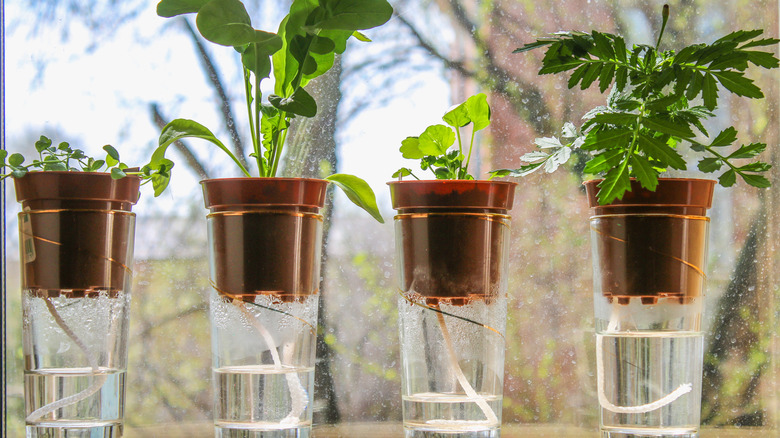How To Winterize A Self-Watering Planter If You Can't Bring It Indoors
When the temperature starts dropping and the first frost warning flashes across your weather app, there's always that one planter that gives you a little side-eye. One night, it's contently sipping away, and the next, frost creeps along its edges, the water inside freezing and threatening to expand. Without proper care, it could join the ranks of broken plant pots around your home and garden, a silent warning of what happens when winter catches you off guard. That's why draining the reservoir is your first line of defense. It removes the very thing that damages your planter.
Even the sturdiest self-watering planters are not invincible; ice can expand violently, turning your beloved container into a shattered mess. Winterizing is your best battle strategy: when done correctly, it protects both the planter and its plants, giving them the best chance to survive the freeze and thrive again when spring arrives. Here's a step-by-step plan to follow so your planters make it through winter in one piece.
Step-by-step winter care for planters left outdoors
If bringing your planter indoors isn't an option, a few clever tricks can help it survive the cold. First, get rid of any water in the reservoir to avoid cracking. Once it's empty, give your planter a little lift off the ground. A few pot feet, bricks, or even a small stand can be effective in improving drainage, keeping the base dry, and stopping the brutal freeze from sneaking in underneath. Next, wrap it up. You can use bubble wrap to protect the plants from frost. You could also try eco-friendly burlap covers as they can protect plants from freezing.
Over that, drape a tarp or frost blanket to shield it from snow and ice. But make sure there's a little airflow so your planter doesn't feel like it's in a sauna. For the plants themselves, adding a layer of straw or mulch can act like a soft blanket, keeping roots insulated when temperatures drop. Certain self-watering pots can withstand freezing temps even without draining the reservoir, just make sure to read the fine print on these planters. If you're planning to move a plant indoors, keep your self-watering planter outside by tipping it upside down under a porch for extra protection and using it as a quirky pedestal for other décor. With a little planning and a touch of creativity, your planter can face the frost head-on and be ready to thrive when spring arrives.

